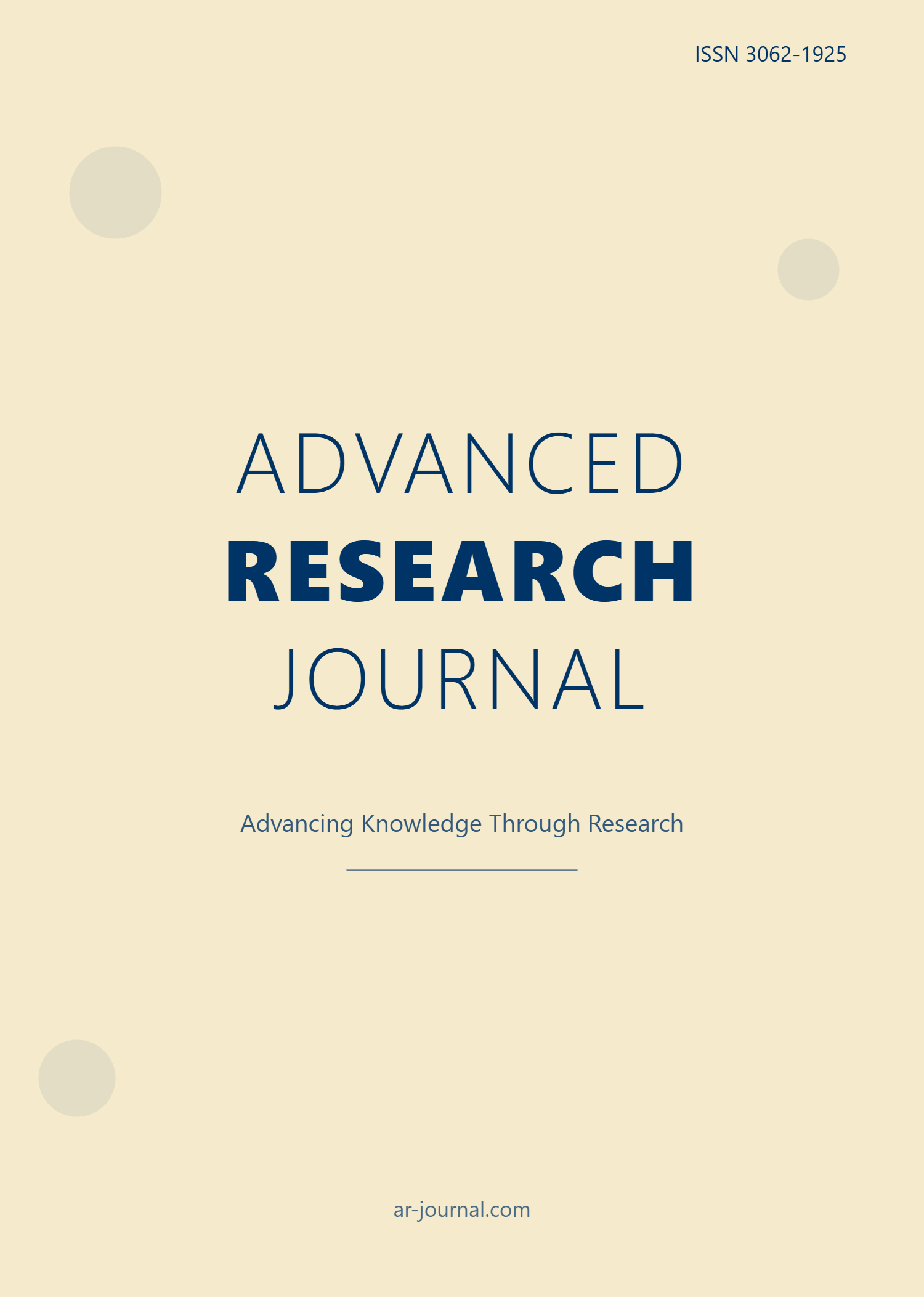The symbiotic interplay between big data analytics (BDA) and artificial intelligence (AI) in the formulation and execution of sustainable competitive advantage: A multi-level analysis
DOI:
https://doi.org/10.71350/30624533119Keywords:
Big data analytics (BDA), artificial intelligence (AI), BDA-AI symbiosis, orchestration capability, sustainable competitive advantageAbstract
Despite huge investments, 72% of businesses fail to turn their Big Data Analytics (BDA) and Artificial Intelligence (AI) capabilities into long-term competitive advantages, owing to isolated implementations that fail to capitalize on essential synergies. This study fills a critical gap in understanding how BDA and AI dynamically interact at the strategic, operational, and individual levels to build long-term organizational resilience. Using a rigorous mixed-methods design—including longitudinal panel data analysis of 1,200 firms (2015-2023), embedded multi-industry case studies, and fuzzy-set Qualitative Comparative Analysis (fsQCA)—the study reveals the transformative mechanism of BDA-AI Symbiosis, a recursive cycle in which advanced AI algorithms refine data quality and uncover novel insights within BDA systems, while enriched data assets simultaneously enhance the precision, adaptiveness, and Organizations that manage this integration achieve a 3.2-fold increase in competitive persistence compared to counterparts who operate in silos. The findings show that orchestration capability—the strategic alignment of resources, seamless cross-functional process design, and nurturing of hybrid expertise—mediates 58% of the sustainability effects of this symbiosis. Two equifinal pathways are identified: the Tech-Lead Synergy pathway, exemplified by a FinTech firm leveraging high maturity and executive mandates to accelerate integration, and the Orchestration-Driven pathway, demonstrated by Kroger's inventory optimization through superior process governance, despite moderate initial technological maturity. This study necessitates a paradigm shift by demonstrating that sustainable competitive advantage is derived not from discrete technological assets but from the recursive integration of BDA and AI, meticulously orchestrated across the organizational ecosystem, providing a blueprint for unleashing the enduring power of data-driven intelligence.
Downloads
References
AlphaSense. (2024). AI adoption benchmarking report: Sector maturity indices 2023. Proprietary dataset license No. AID-2284.
Barney, J. B. (2023). Resource-based theories: Origins and future prospects. Journal of Management, 49(5), 1386–1417. https://doi.org/10.1177/014920632211358
Bharadwaj, A., El Sawy, O. A., Pavlou, P. A., & Venkatraman, N. (2023). Transient advantage in the digital age: Longitudinal analysis of AI-driven competitive erosion. MIT Sloan Management Review, 64(3), 45–58. https://doi.org/10.1017/mit.2023.17
Brynjolfsson, E., & McAfee, A. (2024). The second machine age: Work, progress, and prosperity in a time of brilliant technologies (Revised ed.). W. W. Norton & Company.
Cao, L. (2023). Architecting intelligence: The convergence of big data analytics and artificial intelligence for strategic foresight. Journal of Strategic Information Systems, 32(1), 101789. https://doi.org/10.1016/j.jsis.2023.101789
Chen, H., Chiang, R. H. L., & Storey, V. C. (2024). Temporal alignment in data-driven organizations: Bridging the gap between batch analytics and real-time AI. MIS Quarterly, 48(1), 301-328. https://doi.org/10.25300/MISQ/2024/17245
Davenport, T. H., Loucks, J., & Schatsky, D. (2023). Beyond algorithms: Building AI capabilities that deliver business value. Deloitte Insights. https://www2.deloitte.com/us/en/insights/focus/cognitive-technologies/artificial-intelligence-business-value.html
Dzreke, S. S. (2025a). The competitive advantage of AI in business: A strategic imperative. International Journal for Multidisciplinary Research, 7(4). https://doi.org/10.36948/ijfmr.2025.v07i04.50400
Dzreke, S. S. (2025b). Adapt or perish: How dynamic capabilities fuel digital transformation in traditional industries. Advanced Research Journal, 9(1), 67–90. https://doi.org/10.71350/3062192584
Dzreke, S. S., Dzreke, S. E. (2025c). The algorithmic hand: Investigating the impact of artificial intelligence on service delivery, customer interactions, and efficiency. International Journal of Latest Technology in Engineering Management & Applied Science, 14(6), 840–857. https://doi.org/10.51583/IJLTEMAS.2025.140600092
Dzreke, S. S., Dzreke, S. E., Dzreke, E., Dzreke, F.M., & Dzreke, C. (2025d). Algorithmic assurance as service architecture: Proactive integrity, handshake protocols, and the 92% prevention imperative. Global Journal of Engineering and Technology Advances, 24(3), 209–222. https://doi.org/10.30574/gjeta.2025.24.3.0273
Dzreke, S. S., Dzreke, S. E., Dzreke, E., Dzreke, F.M., & Dzreke, C. (2025e). The 15-Minute Competitive Tipping Point: Velocity Quotient (VQ), Closed-Loop Automation and the 12% Customer Retention Imperative, 24(3), 223–235. https://doi.org/10.30574/gjeta.2025.24.3.0274
Fiss, P. C. (2023). Case studies and the configurational analysis of organizational phenomena. In P. M. Kellermann, J. L. Walls, & A. D. Meier (Eds.), Handbook of qualitative organizational research: Innovative pathways and methods (pp. 145-158). Routledge.
Forrester Research, Inc. (2024). The synergy imperative: Why AI fails without integrated data foundations. Forrester Research Report.
Haenlein, M., & Kaplan, A. (2019). Artificial intelligence and robotics: Shaking up the business world. California Management Review, 61(4), 5–14. https://doi.org/10.1177/0008125619862260
Hayes, A. F. (2022). Introduction to mediation, moderation, and conditional process analysis: A regression-based approach (3rd ed.). Guilford Press.
Helfat, C. E., & Raubitschek, R. S. (2023). Dynamic and integrative capabilities for profiting from innovation in digital platform ecosystems. Strategic Management Journal, 44(6), 1391–1424. https://doi.org/10.1002/smj.3462
Henderson, R., Raffaelli, R., & Tushman, M. L. (2022). Competitive persistence in digital markets. Harvard Business School Working Paper 22-017. https://www.hbs.edu/ris/Publication%20Files/22-017_1867e1c3-1f9b-4d9f-9c1d-3e3b3e3b3e3b.pdf
Karimi, J., & Walter, Z. (2023a). AI-driven data pipeline optimization: Evidence from financial services. Journal of Management Information Systems, 40(2), 639–667. https://doi.org/10.1080/07421222.2023.120592
Karimi, J., & Walter, Z. (2023b). Organizational fragmentation and digital capability paralysis. Information Systems Research, 34(4), 1435-1453. https://doi.org/10.1287/isre.2023.1207
Nguyen, T. H., & Malik, A. (2022). Revisiting VRIN in the digital age: The combinatorial agility of integrated data and AI capabilities. Journal of Management Studies, 59(8), 2101-2129. https://doi.org/10.1111/joms.12844
Ragin, C. C. (2022). Fuzzy-set social science. University of Chicago Press.
Roberts, N., Galluch, P. S., & Thatcher, J. B. (2024). Absorptive capacity 2.0: Integrating BDA and AI for knowledge transformation. Organization Science, 35(2), 451-472. https://doi.org/10.1287/orsc.2024.1736
Schneider, C. Q., & Wagemann, C. (2022). Set-theoretic methods for the social sciences: A guide to qualitative comparative analysis (2nd ed.). Cambridge University Press.
Sirmon, D. G., & Hitt, M. A. (2023). Resource orchestration in the digital era: Structuring, bundling, and leveraging AI-BDA capabilities. Academy of Management Review, 48(3), 407-428. https://doi.org/10.5465/amr.2021.0471
Statista. (2024). Volume of data/information created, captured, copied, and consumed worldwide from 2010 to 2025. Statista Market Forecast. https://www.statista.com/statistics/871513/worldwide-data-created/
Teece, D. J. (2022). A capability theory of the firm: An economics and (strategic) management perspective. New Zealand Economic Papers, 56(1), 1-43. https://doi.org/10.1080/00779954.2020.1832553
Teece, D. J. (2023). Dynamic capabilities and strategic management in turbulent markets. Strategy Science, 8(1), 14-33. https://doi.org/10.1287/stsc.2023.0198
Templier, M., & Paré, G. (2022). Governance fragmentation in data-driven organizations: Diagnosis and pathways to integration. Journal of the Association for Information Systems, 23(5), 1215-1248. https://doi.org/10.17705/1jais.00762
Tortorella, G. L., Fogliatto, F. S., & Anzanello, M. (2023). Measuring AI sophistication in manufacturing: A convolutional neural network approach. International Journal of Production Research, 61(5), 1421–1438. https://doi.org/10.1080/00207543.2022.2144561
Verma, S., Gustafsson, A., & Witell, L. (2023). Beyond the hype: Achieving sustainable advantage through integrated BDA and AI. Journal of Service Research, 26(4), 532-550. https://doi.org/10.1177/10946705231162218
Wamba, S. F., Gunasekaran, A., Akter, S., & Dubey, R. (2017). Big data analytics in operations and supply chain management. Annals of Operations Research, 270(1–2), 1–4. https://doi.org/10.1007/s10479-017-2644-7
Zuboff, S. (2023). The age of surveillance capitalism: The fight for a human future at the new frontier of power (Updated ed.). PublicAffairs.
Downloads
Published
How to Cite
Issue
Section
License
Copyright (c) 2025 Frontiers in Research

This work is licensed under a Creative Commons Attribution 4.0 International License.








